| Listing 1 - 9 of 9 |
Sort by
|
Book
ISBN: 0803288980 0803288964 9780803288980 9780803288966 9780803288546 0803288549 9780803288973 Year: 2016 Publisher: Lincoln
Abstract | Keywords | Export | Availability | Bookmark
 Loading...
Loading...Choose an application
- Reference Manager
- EndNote
- RefWorks (Direct export to RefWorks)
"Set in the Midwest, One-Hundred-Knuckled Fist tells the stories of everyday, blue-collar workers with dark humor and a gritty, experimental style, revealing the absurdity of the daily grind and its crushing reality" --
Blue collar workers --- Working class --- Laborers --- Manual workers --- Employees --- Middle West
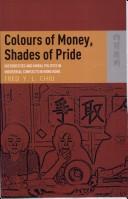
ISBN: 988220080X 1282705830 9786612705830 9789882200807 9622096255 9789622096257 9622096263 9789622096264 Year: 2003 Publisher: Hong Kong Hong Kong University Press
Abstract | Keywords | Export | Availability | Bookmark
 Loading...
Loading...Choose an application
- Reference Manager
- EndNote
- RefWorks (Direct export to RefWorks)
In June 1986, a Japanese watch factory in Hong Kong tried to fire 36 of its women workers. This provoked an unprecedented sit-in by 300 of the women employed at the plant. The sit-in lasted for 13 days and accounted for over half the days lost to labour unrest that year.
Blue collar workers --- Labor disputes --- Sit-down strikes --- Strikes and lockouts --- Attitudes. --- Social aspects --- Clock and watch industry
Book
ISBN: 1588269779 1588267563 9781588269775 9781588267566 Year: 2022 Publisher: Boulder
Abstract | Keywords | Export | Availability | Bookmark
 Loading...
Loading...Choose an application
- Reference Manager
- EndNote
- RefWorks (Direct export to RefWorks)
Jeff Torlina challenges the conventional wisdom about the attitudes of blue-collar men toward their work. Torlina highlights the voices of pipe fitters, welders, carpenters, painters, locomotive assemblers, and factory workers to reveal the complexities—and advantages—of working-class life. This book is a penetrating critique of many commonly held assumptions, and a compelling case for a new understanding of our social class system.
Blue collar workers. --- Working class. --- Commons (Social order) --- Labor and laboring classes --- Laboring class --- Labouring class --- Working class --- Working classes --- Laborers --- Manual workers --- Employment --- Social classes --- Labor --- Employees
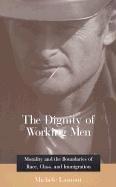
ISBN: 0674039882 9780674039889 9780674009929 0674003063 9780674003064 0674003063 Year: 2021 Publisher: Cambridge, MA
Abstract | Keywords | Export | Availability | Bookmark
 Loading...
Loading...Choose an application
- Reference Manager
- EndNote
- RefWorks (Direct export to RefWorks)
Michèle Lamont takes us into the world inhabited by working-class men--the world as they understand it. Interviewing black and white working-class men who, because they are not college graduates, have limited access to high-paying jobs and other social benefits, she constructs a revealing portrait of how they see themselves and the rest of society. Morality is at the center of these workers' worlds. They find their identity and self-worth in their ability to discipline themselves and conduct responsible but caring lives. These moral standards function as an alternative to economic definitions of success, offering them a way to maintain dignity in an out-of-reach American dreamland. But these standards also enable them to draw class boundaries toward the poor and, to a lesser extent, the upper half. Workers also draw rigid racial boundaries, with white workers placing emphasis on the "disciplined self" and blacks on the "caring self." Whites thereby often construe blacks as morally inferior because they are lazy, while blacks depict whites as domineering, uncaring, and overly disciplined. This book also opens up a wider perspective by examining American workers in comparison with French workers, who take the poor as "part of us" and are far less critical of blacks than they are of upper-middle-class people and immigrants. By singling out different "moral offenders" in the two societies, workers reveal contrasting definitions of "cultural membership" that help us understand and challenge the forms of inequality found in both societies.
Blue collar workers --- Men --- Working class --- Work ethic --- Ethic, Work --- Ethics --- Human males --- Human beings --- Males --- Effeminacy --- Masculinity --- Laborers --- Manual workers --- Employees --- Employment
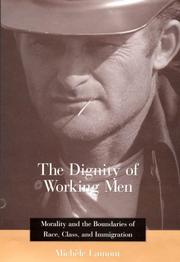
ISBN: 0674003063 0674009924 9780674009929 Year: 2000 Publisher: New York, N.Y. Russell Sage Foundation
Abstract | Keywords | Export | Availability | Bookmark
 Loading...
Loading...Choose an application
- Reference Manager
- EndNote
- RefWorks (Direct export to RefWorks)
Michele Lamont takes us into the world inhabited by working-class men - the world as they understand it. Interviewing black and white working-class men who, because they are not college graduates, have limited access to high-paying jobs and other social benefits, she constructs a revealing portrait of how they see themselves and the rest of society. Morality is at the centre of these workers' worlds. They find their identity and self-worth in their ability to discipline themselves and conduct responsible but caring lives. These moral standards function as an alternative to economic definitions of success, offering them a way to maintain dignity in an out-of-reach American dreamland. But these standards also enable them to draw class boundaries toward the poor and, to a lesser extent, the upper half. Workers also draw rigid racial boundaries, with white workers placing emphasis on the "disciplined self" and blacks on the "caring self". Whites thereby often construe blacks as morally inferior because they are lazy, while blacks depict whites as domineering, uncaring and overly disciplined. This book also opens up a wider perspective by examining American workers in comparison with French workers, who take the poor as "part of us" and are far less critical of blacks than they are of upper-middle-class people and immigrants. By singling out different "moral offenders" in the two societies, workers reveal contrasting definitions of "cultural membership" that help us understand and challenge the forms of inequality found in both societies.
Blue collar workers --- Men --- Work ethic --- Working class --- Employment --- #SBIB:316.334.2A340 --- 316.343.63 --- 316.343.63 Arbeidersstand. Proletariaat. Landarbeiders --(sociale stratificatie) --- Arbeidersstand. Proletariaat. Landarbeiders --(sociale stratificatie) --- Arbeidssociologie: ongelijkheden op de arbeidsmarkt: algemeen --- Ethic, Work --- Ethics --- Human males --- Human beings --- Males --- Effeminacy --- Masculinity --- Laborers --- Manual workers --- Employees --- Social stratification --- Social problems
Book
ISBN: 0520273451 0520282191 0520953878 1283584093 9780520953871 9780520273450 9781283584098 Year: 2012 Publisher: Berkeley University of California Press
Abstract | Keywords | Export | Availability | Bookmark
 Loading...
Loading...Choose an application
- Reference Manager
- EndNote
- RefWorks (Direct export to RefWorks)
Delving beneath Southern California's popular image as a sunny frontier of leisure and ease, this book tells the dynamic story of the life and labor of Los Angeles's large working class. In a sweeping narrative that takes into account more than a century of labor history, John H. M. Laslett acknowledges the advantages Southern California's climate, open spaces, and bucolic character offered to generations of newcomers. At the same time, he demonstrates that-in terms of wages, hours, and conditions of work-L.A. differed very little from America's other industrial cities. Both fast-paced and sophisticated, Sunshine Was Never Enough shows how labor in all its guises-blue and white collar, industrial, agricultural, and high tech-shaped the neighborhoods, economic policies, racial attitudes, and class perceptions of the City of Angels. Laslett explains how, until the 1930's, many of L.A.'s workers were under the thumb of the Merchants and Manufacturers Association. This conservative organization kept wages low, suppressed trade unions, and made L.A. into the open shop capital of America. By contrast now, at a time when the AFL-CIO is at its lowest ebb-a young generation of Mexican and African American organizers has infused the L.A. movement with renewed strength. These stories of the men and women who pumped oil, loaded ships in San Pedro harbor, built movie sets, assembled aircraft, and in more recent times cleaned hotels and washed cars is a little-known but vital part of Los Angeles history.
Working class --- Labor --- Labor movement --- Labor and laboring classes --- Social movements --- Manpower --- Work --- Commons (Social order) --- Laboring class --- Labouring class --- Working classes --- Social classes --- History. --- Employment --- History --- E-books --- agricultural. --- american history. --- blue collar workers. --- california. --- economic policies. --- industrial relations. --- industrialization. --- labor capitals. --- labor historians. --- labor history. --- labor movements. --- labor types. --- laborers. --- los angeles history. --- los angeles. --- merchants and manufacturers association. --- nonfiction. --- race and class. --- san pedro harbor. --- southern california. --- trade unions. --- united states. --- wages. --- white collar workers. --- work hours. --- working class. --- working conditions.
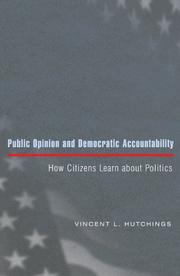
ISBN: 0691123799 Year: 2005 Publisher: Woodstock : Princeton University Press,
Abstract | Keywords | Export | Availability | Bookmark
 Loading...
Loading...Choose an application
- Reference Manager
- EndNote
- RefWorks (Direct export to RefWorks)
Much of public opinion research over the past several decades suggests that the American voters are woefully uninformed about politics and thus unable to fulfill their democratic obligations. Arguing that this perception is faulty, Vincent Hutchings shows that, under the right political conditions, voters are surprisingly well informed on the issues that they care about and use their knowledge to hold politicians accountable. Though Hutchings is not the first political scientist to contend that the American public is more politically engaged than it is often given credit for, previous scholarship--which has typically examined individual and environmental factors in isolation--has produced only limited evidence of an attentive electorate. Analyzing broad survey data as well as the content of numerous Senate and gubernatorial campaigns involving such issues as race, labor, abortion, and defense, Hutchings demonstrates that voters are politically engaged when politicians and the media discuss the issues that the voters perceive as important. Hutchings finds that the media--while far from ideal--do provide the populace with information regarding the responsiveness of elected representatives and that groups of voters do monitor this information when "their" issues receive attention. Thus, while the electorate may be generally uninformed about and uninterested in public policy, a complex interaction of individual motivation, group identification, and political circumstance leads citizens concerned about particular issues to obtain knowledge about their political leaders and use that information at the ballot box.
Democracy --- Political participation --- Public opinion --- Public opinion. --- Atlanta Journal. --- Charlotte Observer. --- Chicago Tribune. --- Dewine, Mike. --- Edwards-McNabb, Sybil. --- Erbring, Lutz. --- Feinstein, Dianne. --- Fenno, Richard. --- Gaudet, Helen. --- Glenn, John. --- Gulf War. --- Harvard Law Review. --- Hatfield, Mark. --- Heflin, Howard. --- Hollings, Ernest. --- Jewish Americans. --- Kassebaum, Nancy. --- Kingdon, John W. --- Lowery, Joseph. --- Millner, Guy. --- National Organization of Women. --- Politics in America. --- Republicans. --- Vietnam War. --- abortion. --- ballot access. --- blue-collar workers. --- core values. --- defense issues. --- foreign policy. --- group interests. --- international trade agreements. --- issue importance. --- issue publics. --- issue voting. --- key votes. --- labor issues. --- latent public opinion. --- media. --- motivation. --- newspapers. --- partisanship. --- party identification. --- priming. --- projection effect. --- religion. --- routine votes. --- salience. --- self-interest. --- term limits. --- union membership. --- women.
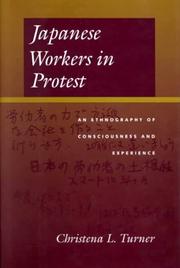
ISBN: 0520923324 0585108404 9780520923324 9780585108407 9780520085701 0520085701 0520219619 9780520219618 0520085701 Year: 1995 Publisher: Berkeley University of California Press
Abstract | Keywords | Export | Availability | Bookmark
 Loading...
Loading...Choose an application
- Reference Manager
- EndNote
- RefWorks (Direct export to RefWorks)
This first ethnographic study of factory workers engaged in radical labor protest gives a voice to a segment of the Japanese population that has been previously marginalized. These blue-collar workers, involved in prolonged labor disputes, tell their own story as they struggle to make sense of their lives and their culture during a time of conflict and instability. What emerges is a sensitive portrait of how workers grapple with a slowed economy and the contradictions of Japanese industry in the late postwar era. The ways that they think and feel about accommodation, resistance, and protest raise essential questions about the transformation of labor practices and limits of worker cooperation and compliance.
Labor unions --- Working class --- Labor movement --- Class consciousness --- Industrial relations --- Labor & Workers' Economics --- Business & Economics --- Japan --- Social conditions --- Consciousness --- Social perception --- Social classes --- J4010 --- J4202 --- J4350 --- J4352 --- Japan: Social sciences in general -- ideology, socio-political and socio-economic movements --- Japan: Sociology and anthropology -- communities -- social classes and groups -- middle class, shi-nō-kō-shō --- Japan: Economy and industry -- labor and employment --- Japan: Economy and industry -- labor and employment -- social conditions --- Conscience de classe --- Relations industrielles --- Mouvement ouvrier --- Syndicats --- Travailleurs --- Japon --- Conditions sociales --- 1945 --- -Trade-unions - Japan. --- Working class - Japan. --- Social movements - Japan. --- Class consciousness - Japan. --- Japan - Social conditions - 1945 --- -Class consciousness --- -Labor unions --- accommodation. --- blue collar workers. --- class consciousness. --- community. --- democracy. --- demonstrations. --- economy. --- ethnography. --- factories. --- factory workers. --- japan. --- japanese history. --- japanese industry. --- japanese labor history. --- japanese society. --- japanese unions. --- labor disputes. --- labor movements. --- labor practices. --- labor relations. --- labor. --- political action. --- protest. --- protests. --- radical labor protest. --- resistance. --- social relations. --- solidarity. --- union meetings. --- union. --- work. --- worker compliance. --- worker cooperation. --- worker dignity. --- Trade-unions - Japan.
Book
Year: 2021 Publisher: Basel, Switzerland MDPI - Multidisciplinary Digital Publishing Institute
Abstract | Keywords | Export | Availability | Bookmark
 Loading...
Loading...Choose an application
- Reference Manager
- EndNote
- RefWorks (Direct export to RefWorks)
This Special Issue includes contributions about occupants’ sustainable living in buildings and communities, highlighting issues surrounding the sustainable development of our environments and lives by emphasizing smart and green design perspectives. This Special Issue specifically focuses on research and case studies that develop promising methods for the sustainable development of our environment and identify factors critical to the application of a sustainable paradigm for quality of life from a user-oriented perspective. After a rigorous review of the submissions by experts, fourteen articles concerning sustainable living and development are published in this Special Issue, written by authors sharing their expertise and approaches to the concept and application of sustainability in their fields. The fourteen contributions to this special issue can be categorized into four groups, depending on the issues that they address. All the proposed methods, models, and applications in these studies contribute to the current understanding of the adoption of the sustainability paradigm and are likely to inspire further research addressing the challenges of constructing sustainable buildings and communities resulting in a sustainable life for all of society.
sustainability --- regionalism --- climate --- unit plan --- apartment --- Singapore --- Korea --- sustainable architecture --- space syntax --- partitioning theory --- total depth --- intelligibility --- movement economies --- architecture --- building performance simulation --- performance-based design --- agent-based model --- Gaussian process --- electroencephalography --- virtual reality --- monument architecture --- stress --- data visualization --- deep learning --- smart building --- interactive experience --- “five senses” interaction --- people-oriented --- embedding --- recommender system --- collaborative filtering --- housing preference --- housing decision --- human behavior simulation --- virtual users --- social sustainability --- performance analysis --- evaluation method --- architectural design education --- eye tracking --- virtual environment --- street robbery --- CPTED --- crime prevention --- fixation count --- people with physical disabilities --- job retention --- path analysis --- perceived workplace safety --- workplace disability facilities --- work satisfaction --- social housing --- social economy actors --- Seoul --- South Korea --- sustainable development --- sustainable design --- energy efficiency --- public rental housing --- building simulation --- elderly --- biophilia --- biophilic experience --- smart home --- smart-home service --- service framework --- water distribution --- water war --- conflict --- ownership --- divided Cyprus --- blue-collar workers --- intervention study --- health promotion --- cardiovascular disease --- n/a --- "five senses" interaction
| Listing 1 - 9 of 9 |
Sort by
|

 Search
Search Feedback
Feedback About UniCat
About UniCat  Help
Help News
News